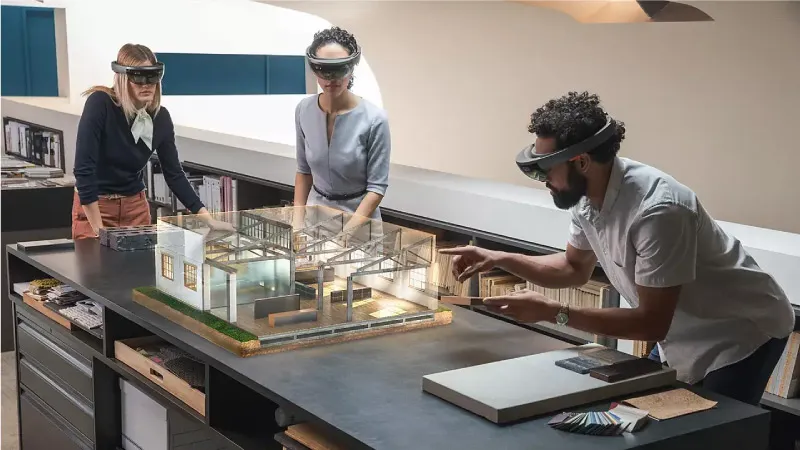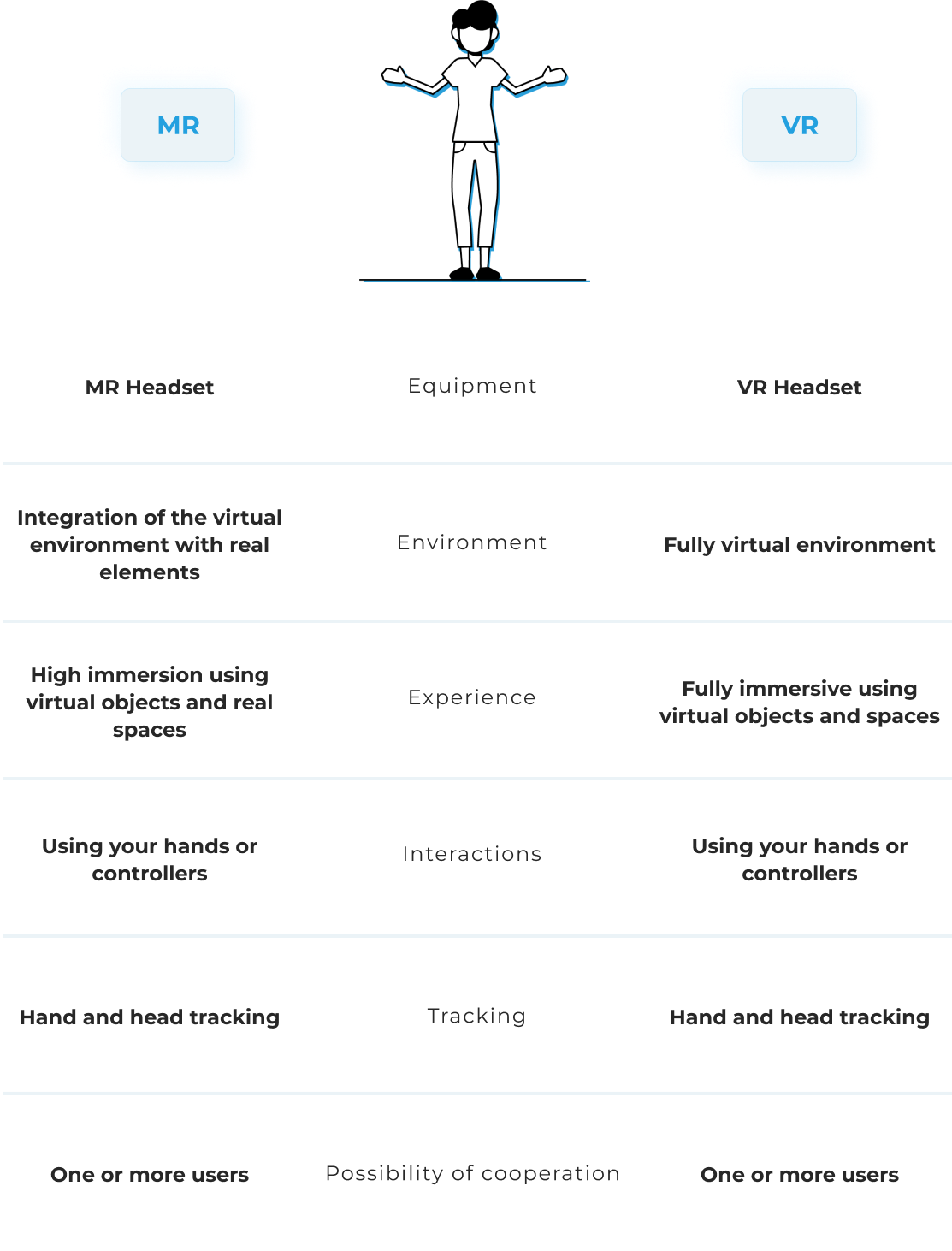VR vs MR: What’s the Difference?
VR (Virtual Reality) and MR (Mixed Reality) are technologies that, while similar, can offer entirely different experiences. Both immerse us in digital worlds, but they do so in different ways and have distinct applications. Let’s take a look at their key differences.
VR – Full Immersion in the Digital World
VR is a technology that transports the user to a fully virtual environment. By wearing VR goggles, we enter an entirely new digital world, disconnected from the real surroundings. The user sees only what has been designed – virtual spaces and objects. This makes VR ideal for training, gaming, simulations, and situations where we want to “transport” the user to a completely controlled environment.

MR – Combining the Virtual and Real Worlds
Mixed Reality works similarly to the well-known AR (Augmented Reality) technology. In MR, the user sees the real world enhanced with digital elements that can interact with the environment. An example could be a virtual object, such as a model or a coffee machine, placed on a real table, behaving as if it were actually there.
Unlike AR, MR allows virtual elements to respond more realistically to the surroundings and their changes. The key difference is the level of interaction. In mixed reality, just like in VR, the user can interact with objects using hands or controllers.

Interactions with the Environment
In VR, the user experiences complete immersion but is entirely cut off from reality and all the elements they see are computer-generated.
MR, on the other hand, allows for more advanced interaction between virtual objects and the real environment, making it particularly useful in complex projects such as industrial training. The user can place a virtual counterpart of a real machine in the physical world and simulate repairing the device at its actual location.
Required Equipment
For VR, devices like Meta Quest 2 are sufficient, along with controllers, allowing users to navigate the virtual world. For MR, more advanced headsets like Microsoft’s HoloLens were initially required. These were more expensive due to the additional sensors and cameras needed to enable virtual objects to “react” to the physical environment.
Today, headsets like Meta Quest 3 work well for both virtual and mixed reality, offering more accessible solutions.
Summary: Choosing the Right Technology
VR and MR are two advanced technologies offering different experiences depending on the user’s needs. VR allows for complete immersion in a virtual world, fully disconnecting from reality, making it ideal for games, simulations, and training that require a controlled environment. MR, on the other hand, blends the real world with virtual elements, enabling interaction between them, making it perfect for professional applications like instructions or simulations in real-world settings. The choice of technology depends on whether the goal is full isolation in a digital world or enhancing reality with interactive elements. Both technologies open up new possibilities and allow for the creation of unique digital experiences, and with the right application preparation and choice of headsets, the app can be used in both VR and MR.
Want to learn more about either technology? Schedule a free consultation!


